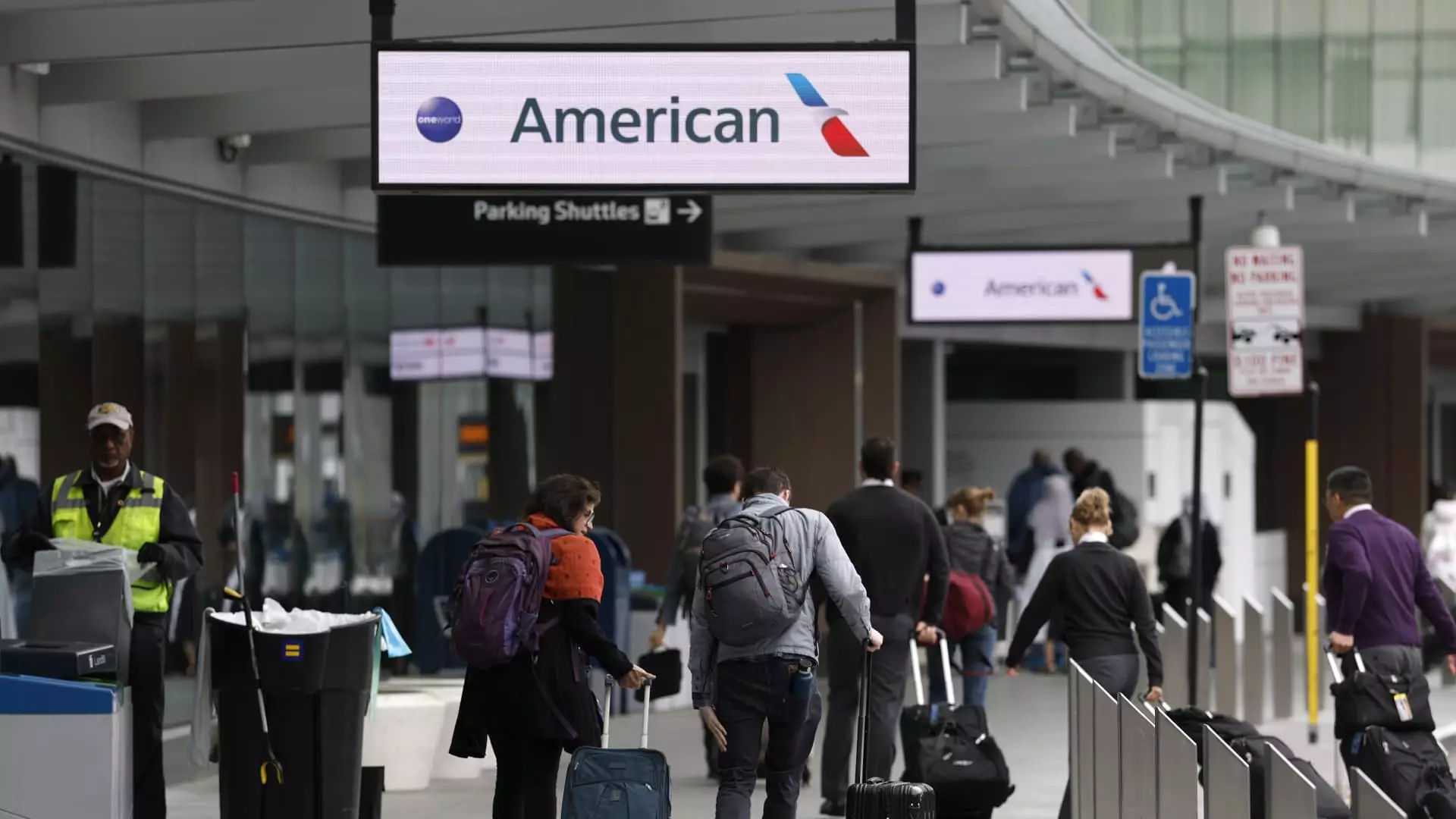The airline industry, a bellwether for consumer confidence and economic health, is grappling with a wave of uncertainty as experts warn of potential recessions on the horizon. During recent earnings calls, top executives from major airlines expressed concerns over a significant decline in domestic travel demand. This downward trend contradicts earlier projections set at the beginning of 2025, highlighting a stark mismatch between expectations and the realities shaped by shifting economic dynamics. Economic experts have attributed this downturn to a constellation of factors, including fluctuating tariff policies initiated during the Trump administration, instable market conditions, and an overarching sense of unease surrounding the economy’s direction.
American Airlines CEO Robert Isom encapsulated this sentiment, emphasizing that consumers hesitate to commit their financial resources to vacations amid such pervasive uncertainty. When individuals feel apprehensive about their economic outlook, disposable income tied to leisure spending often takes a hit. It is evident that the psychological impacts of economic instability are just as crucial as the statistical figures presented in market reports. As consumers weigh their options, many are favoring restraint over reckless spending, which has direct repercussions for airlines laden with excess seat inventory.
Shifting Market Dynamics and Capacity Reductions
In response to the anemic demand revelations, major carriers such as Delta Air Lines, Southwest Airlines, and United Airlines are reevaluating their growth strategies and have announced cuts to capacity expansion plans. While these airlines still harbor hopes for a thriving summer travel season, the withdrawal of optimistic financial forecasts is a telling indicator of their caution. In a particularly notable move, United Airlines has prepared separate outlooks to navigate contrasting economic realities, one anticipating recession and one optimistic about sustained profitability.
This backdrop results in a noticeable shift in airfare trends. March data from the Bureau of Labor Statistics reflects a 5.3% annual decline in airfare, underscoring the competitive landscape businesses must now navigate to fill their flights. Even as peak travel periods like Easter approach, airlines find themselves caught in a challenging tightrope act, balancing the urge to fill seats against the need to maintain profit margins. The price elasticity of demand has become increasingly apparent, as benchmarking against the previous year’s performance reveals stark shifts in consumer behavior.
Corporate Travel: The Weight of Uncertainty
A central theme emerging from these discussions is the struggle of the corporate travel sector—an area traditionally less sensitive to price fluctuations. Analysts like Conor Cunningham observe this sector’s vulnerability to economic uncertainty, noting that when apprehension looms, business travel is often the first expenditure to be curtailed. This dynamic was highlighted by Delta CEO Ed Bastian, who initially noted a promising uptick in corporate travel at the start of the year, only for momentum to screech to a halt amidst external pressures.
The economic landscape is fraught with challenges, causing airlines to reconsider pricing strategies in response to weaker business travel demand. As companies tighten their budgets, travelers are more inclined to seek out value-driven options rather than splurging on premium fare options. With a surplus of available seats in the domestic market, airlines like Alaska Airlines are already taking precursory steps to modify pricing structures, trying to stimulate demand and fight off the threat of revenue decimation.
The Silver Lining of International Travel
Despite these daunting challenges, not all segments of the airline industry are faltering. Noteworthy figures suggest that travel demand from U.S.-based customers to international destinations continues to exhibit strength, serving as a potential lifeline during turbulent times. Executives are leaning into this trend, recognizing that, on certain fronts, the desire for travel remains robust.
However, the overarching narrative remains one of cautious optimism. Isom aptly stated that stability in the economy would in turn inspire expedient recovery—a sentiment that aligns with the broader hopes of airline executives. The path forward, therefore, hinges on restoring confidence, navigating the complexities of market fluctuations, and harnessing untapped potential, both domestically and abroad. The key lies in adaptability, resilience, and creative strategies in response to shifting passenger behaviors—all elements that will shape the industry’s recovery trajectory in a climate rife with uncertainty.


Leave a Reply